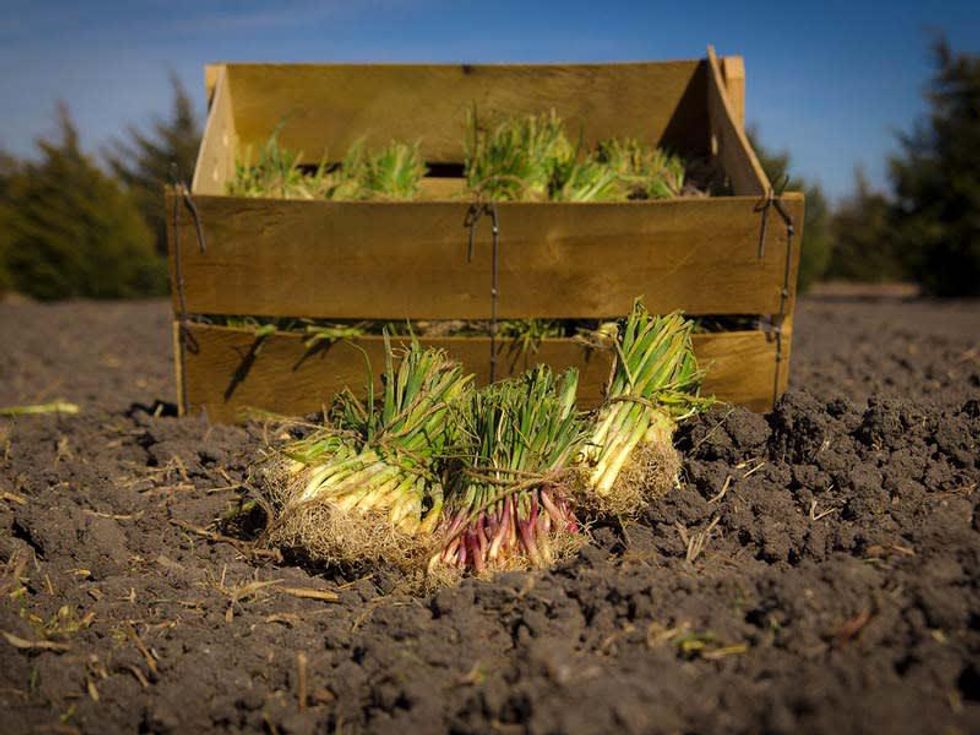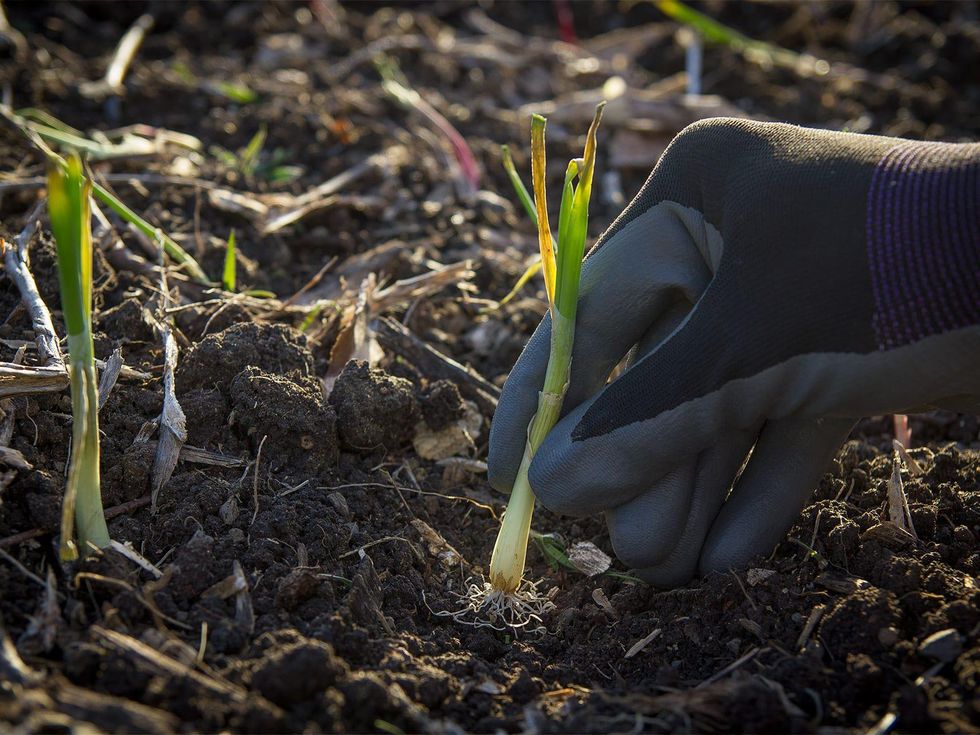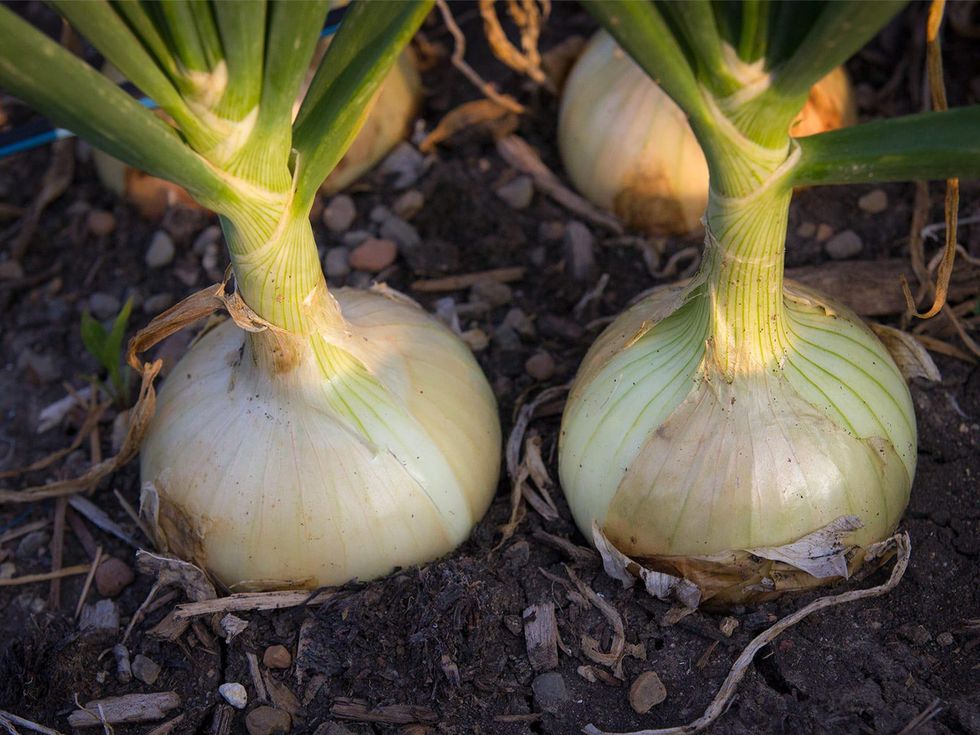The Farmer Diaries
Texas farmer reveals everything you need to know about onions
Onions are an essential in any home cook's kitchen, and there's nothing like having a supply growing nearby. Fortunately, it's not hard to grow your own, if you have a sunny spot of ground the size of a dinner table and the right varieties.
If you want to grow onions from seed in Texas, you need to start in the fall. But the better bet is to plant something called onion sets, in January or February. Onion sets consist of young onion plants, started from seed by a commercial nursery and allowed to grow a little while before being forced into dormancy, so they can be uprooted and transplanted.
You can find these immature plants, tied together with twine in quantities of 50-60 per bunch, for about $12. That's more expensive than seed, but they're far more convenient and easier to grow successfully.
Onions come in three varieties: short-day, long-day or intermediate.
- Short-day need only about 12 hours of daylight to trigger the onion root to form a bulb. These are the best choice for Texas.
- Long-day take 16 hours. They start to bulb later in the season — good for growers in the north but not for Texans, who need the bulbing process to take place before summer drought kicks in.
- Intermediary varieties are said to do well anywhere. I stick with short-day onions just to play it safe.
Popular short-day onions for Texas growers are 1015 Texas Supersweet (known as 1015 because the seed is sown on October 15 of the previous year), Texas Early White, Southern Belle, Texas Early Grano and White Bermuda, most of which can be found at garden centers, feed stores or online from Willhite Seed Company.
Soil
Onion sets need to be planted in a spot of ground that receives sunlight all day and is elevated enough that water doesn't pool up on it after a rain. To ensure that the soil is well-drained for onions, a raised bed at least 4 inches high is perfect.
The soil should be loose and full of organic material such as compost or coconut coir. When soil is well-tilled, free of clods and full of fine soil particles, it's said to have good tilth; tilth is important in planting onion sets because it ensures that the roots are covered without gaps or air pockets.
Onions are heavy feeders, so the soil needs to be enriched with organic soil amendments: alfalfa meal for nitrogen; soft rock phosphate for phosphorous; and a product known as Sul-Po-Mag that adds sulfur, potassium and magnesium. Additionally, it's a good idea to fortify the soil with a mineral product that adds calcium, iron and a little more magnesium. These products are found at garden centers that specialize in organics.
Planting
Once the soil is prepared, planting is simple. With my finger, I poke small depressions about an inch deep in the soil. I place the plant's roots into the depression and nudge soil over the roots until the plant can stand on its own.
It's tempting to want to poke the onion down deep into the soil, but doing so will retard its growth. Instead, the plant should be set no more deeply than is needed to cover the bottom half-inch of the plant.
Bigger plants — as big around as a marker — can be planted a little deeper. Small plants — as big around as pencil lead — must be set less deeply. Onion bunches will include plants both large and small; all are good to plant.
Spacing the onions in the bed requires forethought. Because they're so small at the transplant stage, it's tempting to pack them in closely; it seems like a waste of space to spread them out. But the onion bulbs will eventually become several inches in diameter. When I plant them, I try to envision the size they'll be by midsummer. Plant them at least four inches between plants so they have room to bulb out and not compete for nutrients.
Caring for them while they grow is simply a matter of watering them if the soil dries out. There are no pests that affect them, and a well-prepared bed should need no additional soil amendments. Onions are truly a plant-water-pick kind of crop.
Harvest
Onions are ready to harvest in June or July, as soon as their tops start to turn yellow and fall over. But they can be harvested at any stage in their development. If I need a green onion for a quick picante sauce, I will pick one early.
In a 4-by-8-foot raised bed, I can plant about 120 onions. With each growing to about a pound when they're picked in mid-summer, I'll harvest as much as much as 100 pounds of onions from each bed — the equivalent of 20 large bags of onions at the grocery store. Indoors, they'll last in storage through mid fall, allowing me to scratch onions off my grocery list for two seasons.
In our small farming operation, my father takes care of the onions for market and plants a couple of crates of sets. His harvest weighs nearly 500 pounds, and he quickly sells them to a distributor who supplies several Dallas-area restaurants. The crates of immature onions are so light that one person can carry them without assistance. That he'll need a tractor to carry them all once they're harvested is a testament of how prolific onions can be.




 GymkhanaGymkhana
GymkhanaGymkhana